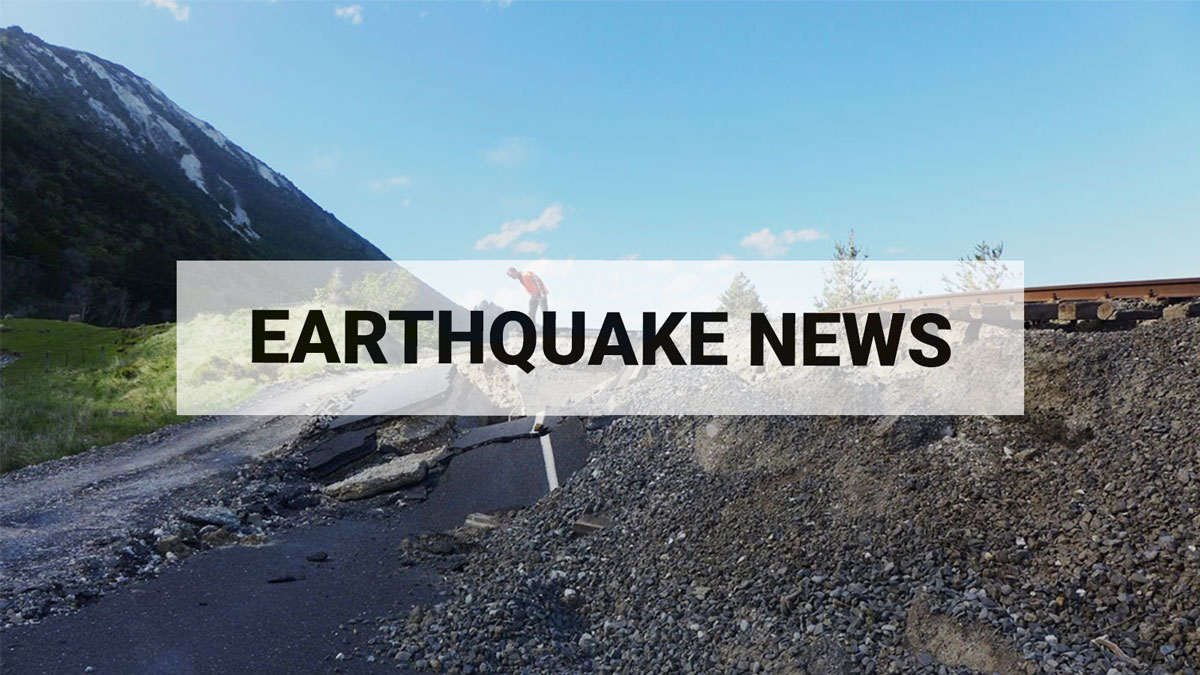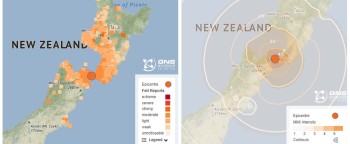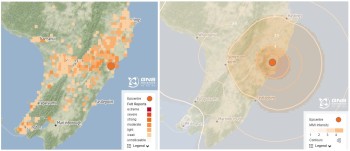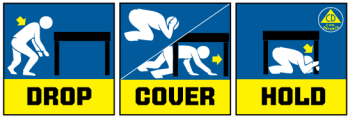
Shaky Sunday for central New Zealand
Two strong earthquakes shook central New Zealand on Sunday, 6 October, starting with an early morning M5.7 in the Cook Strait that was reported felt by over 37,000 people. The day finished with another strong quake, this time a M4.8 earthquake in Pōrangahau at 11:19PM.
Sunday morning's M5.7 earthquake was located 25 km west of Wellington, and felt along the top of the South Island and through the lower North Island. So far, we have located five aftershocks from this event, the largest being a widely felt M3.8 on Monday 7 October.
Scanning through data from our closest instruments to the earthquake, we can see lots of smaller aftershocks that are not triggering our earthquake detection system. The earthquakes that have been big enough to meet our system thresholds, and show on the GeoNet website and app, have been consistent with what we would expect to see as aftershocks.
The Cook Strait is a very seismically active area of New Zealand, lying close to the Hikurangi subduction zone - the boundary between the Australian and Pacific Plates - and other major crustal faults. It also marks a transition between the North Island and South Island fault systems. Earlier in the month a shallow M5.0 earthquake, on 1 October occurred further south in the Cook Strait and was felt by 11,272 people.
Sunday’s Pōrangahau earthquake
Later that Sunday evening we received over 2,000 felt reports for a M4.8 Pōrangahau earthquake. So far, we have recorded 27 earthquakes in the area following this event, the largest being a M3.7 on Tuesday 8 October.
This is not unusual behaviour for Pōrangahau, where we often see clusters of earthquakes like this one, which can often be coincident with slow slip events in this part of the subduction zone. The most recent earthquake sequence in this area was in June 2023.
While it can be unsettling to have multiple earthquakes on one day, all these events are within the normal levels of activity we see in these regions. Each of them is a great reminder that earthquakes can occur anywhere in seismically active Aotearoa New Zealand at any time and without warning – the best thing you can do is be prepared, and Drop, Cover and Hold if you feel shaking.
Watch: Why do we get so many earthquakes in and around Aotearoa New Zealand?
Read: Getting prepared for earthquakes, tsunami and landslides.
Earthquakes can occur anywhere in New Zealand at any time. In the event of a large earthquake: Drop, Cover and Hold.
Remember Long or Strong, Get Gone : If you are near the coast, or a lake, and feel a strong earthquake that makes it hard to stand up OR a weak rolling earthquake that lasts a minute or more move immediately to the nearest high ground or as far inland as you can, out of tsunami evacuation zones.
Know what to do?
The National Emergency Management Agency (NEMA) has a great website with information on what to do before, during and after an earthquake.
Prepare your home. Protect your whānau.
There’s a lot we can do to make our homes safer and stronger for natural hazards. EQC Toka Tū Ake's website has key steps to get you started.
Media Contact: 021 574 541 or media@gns.cri.nz





